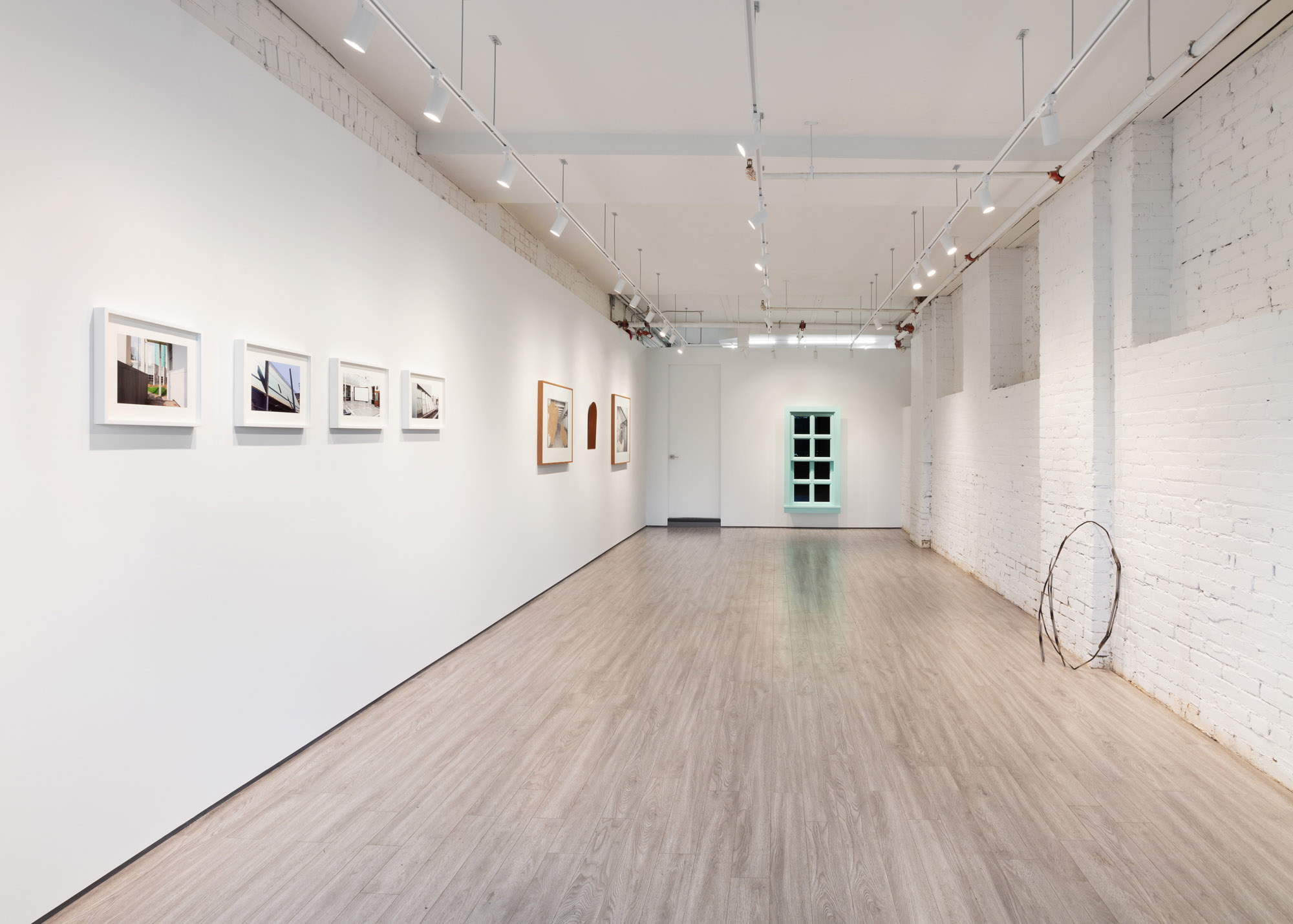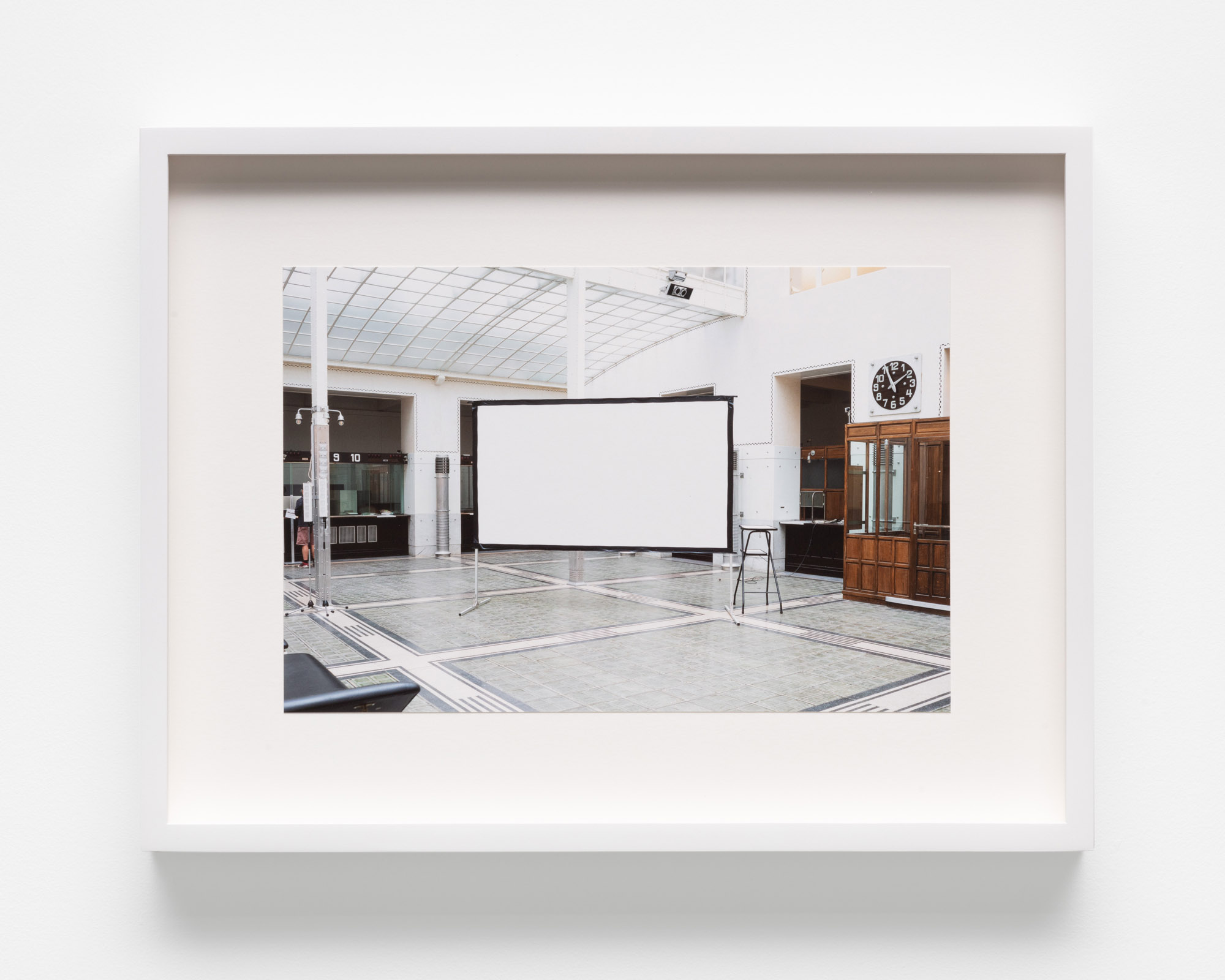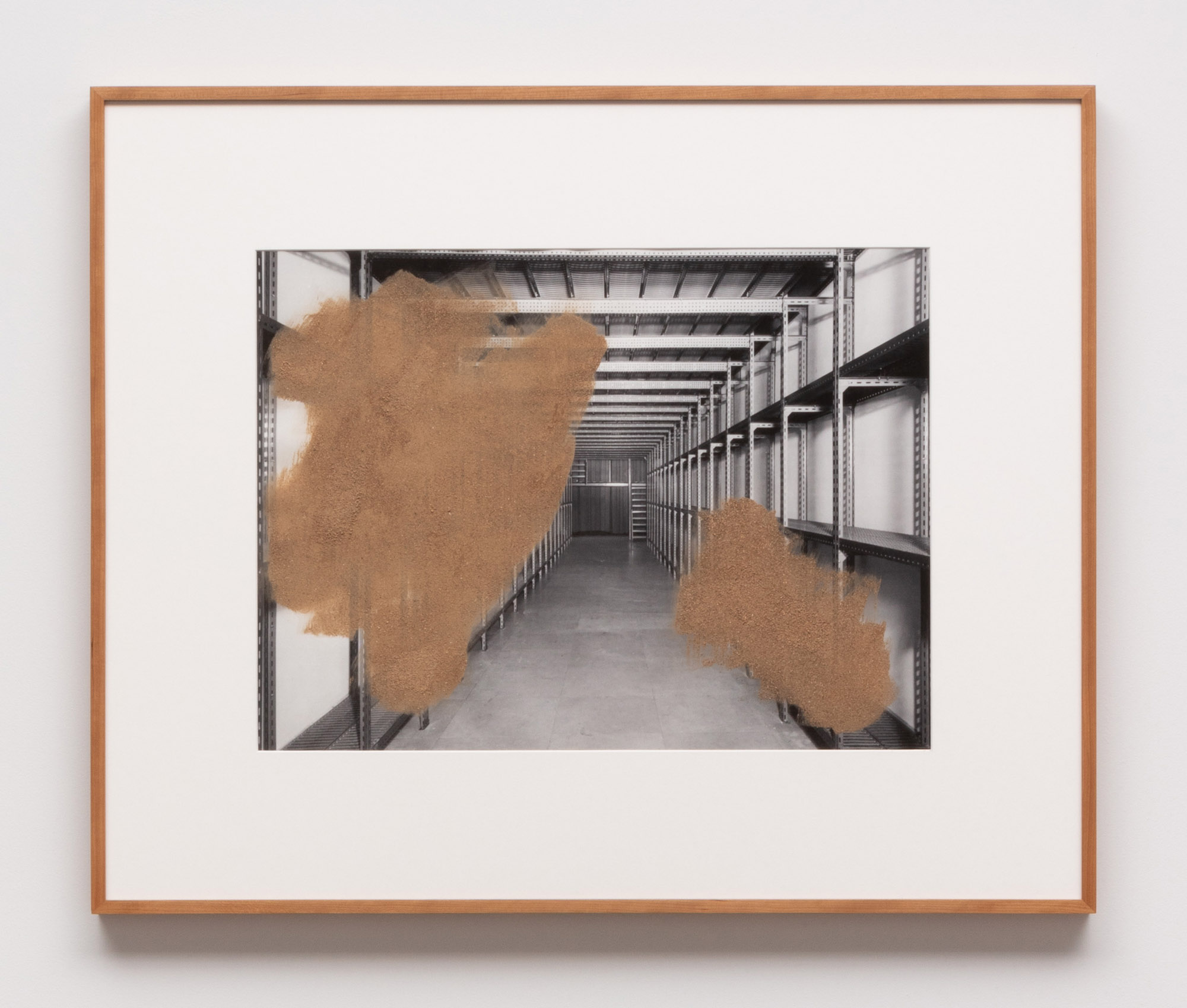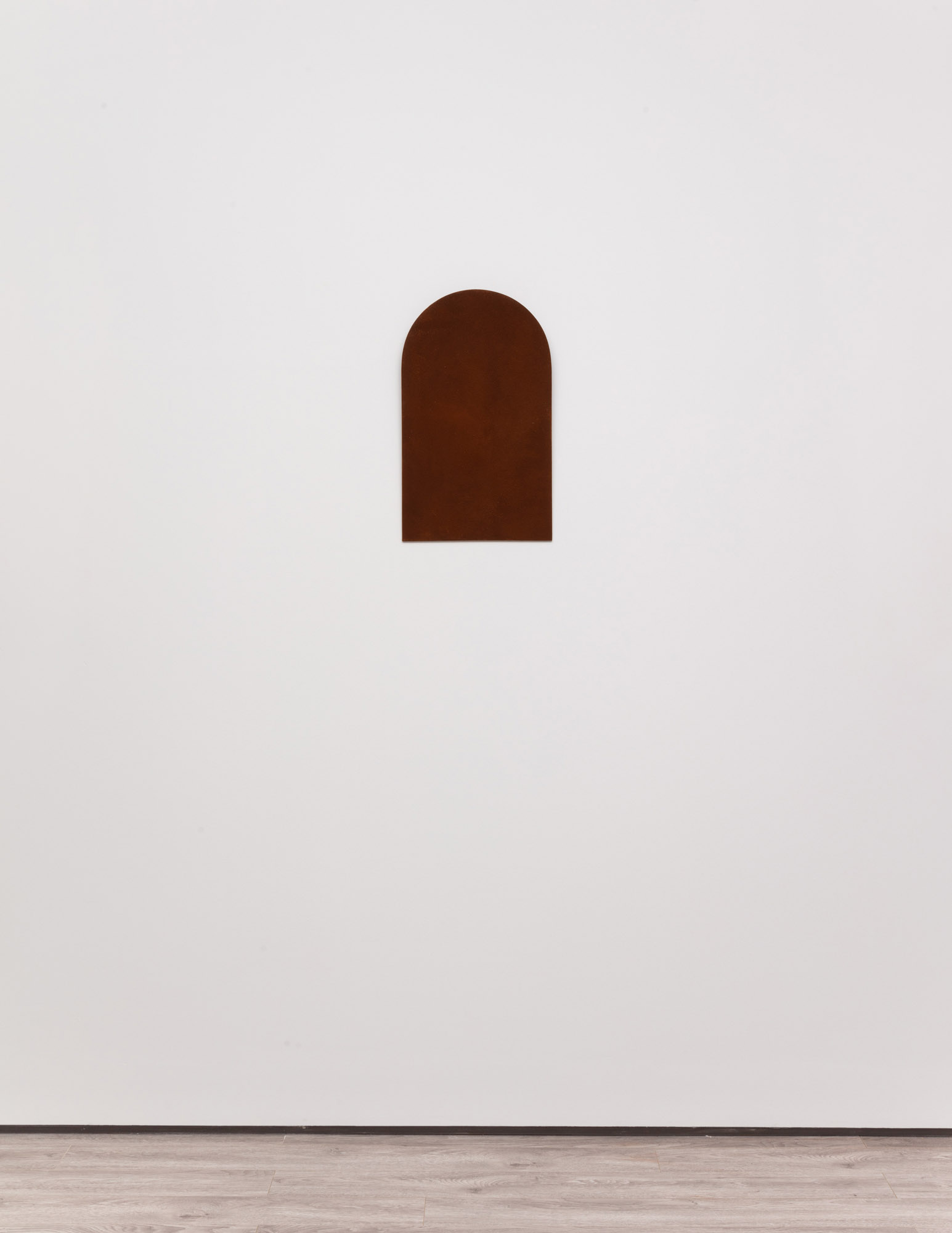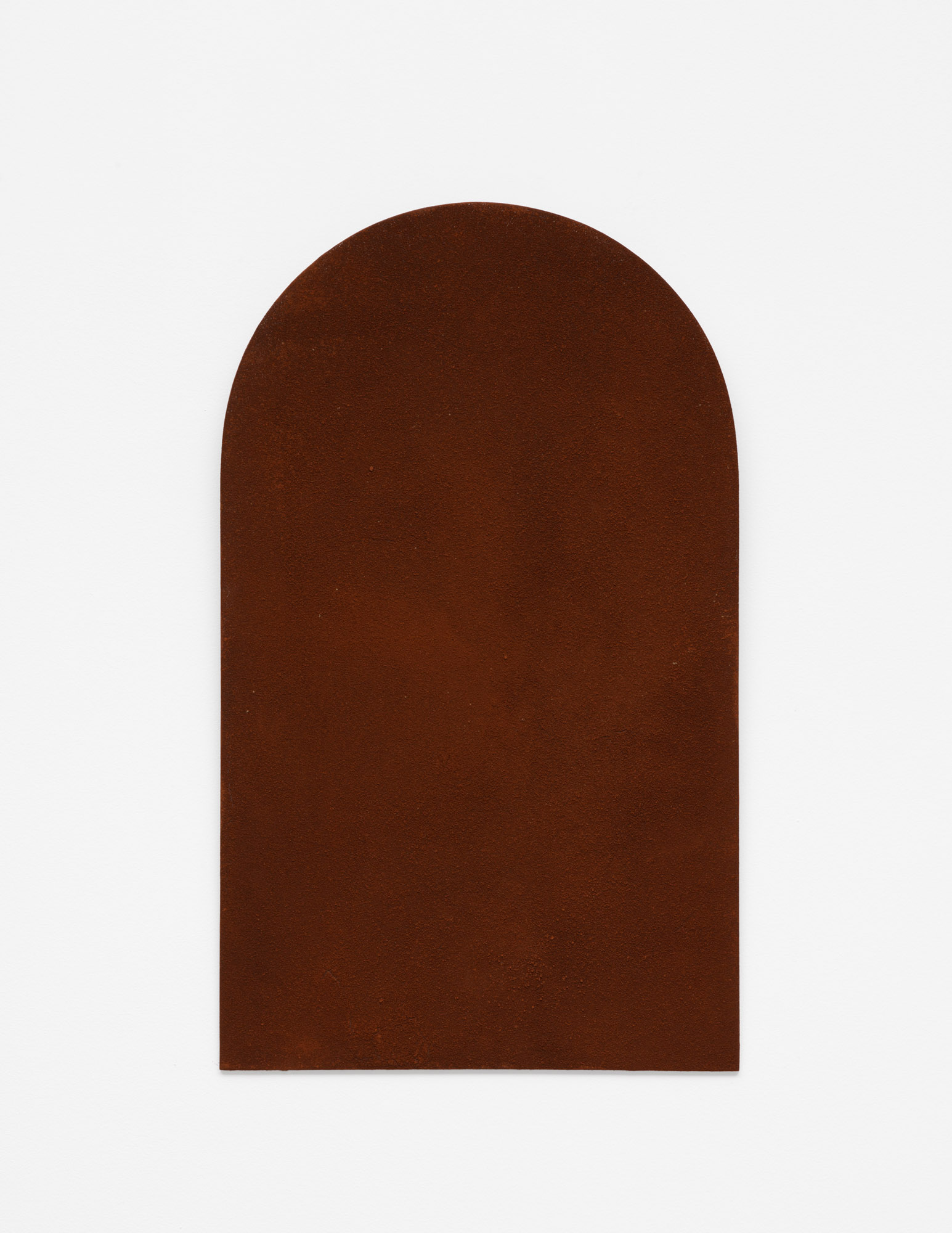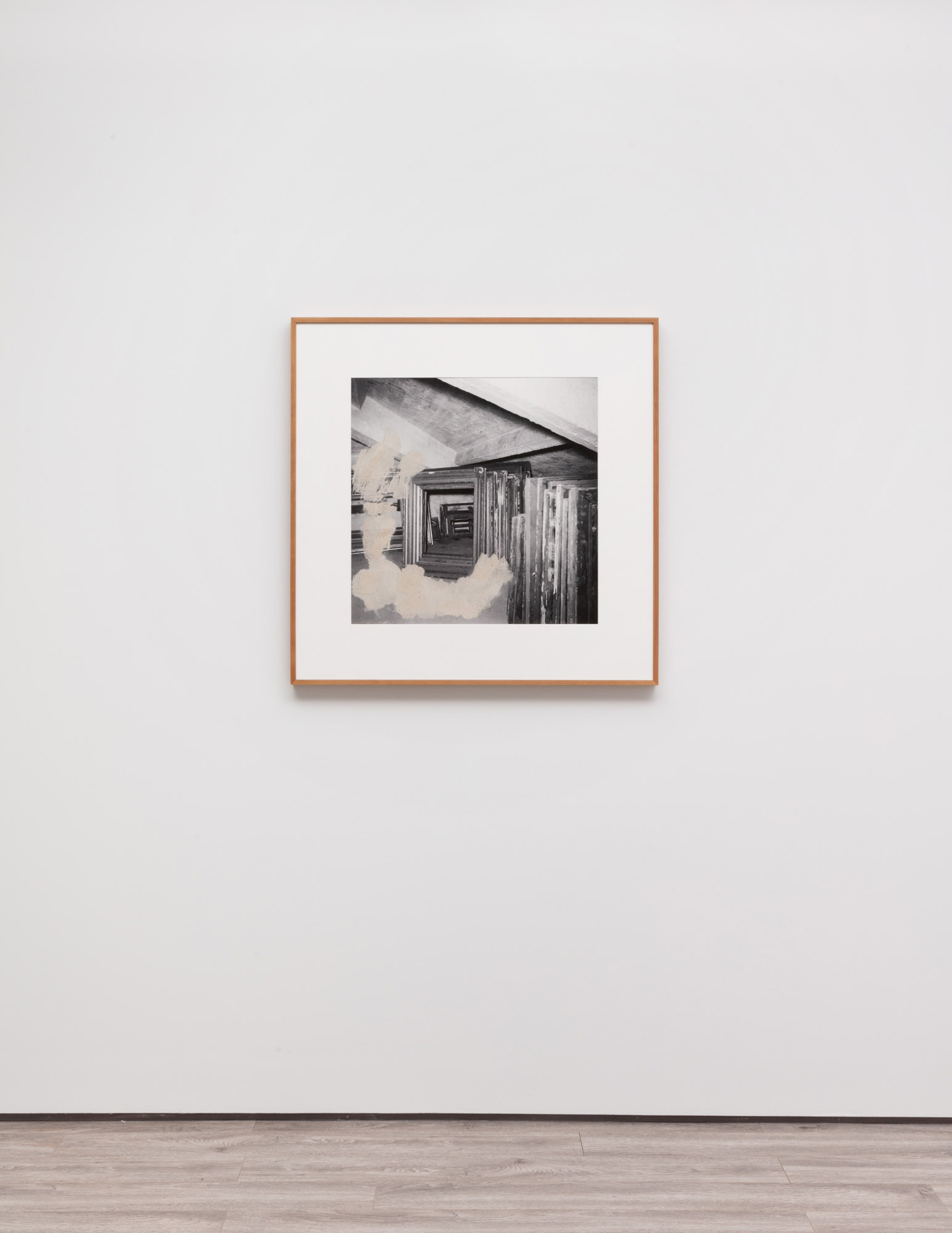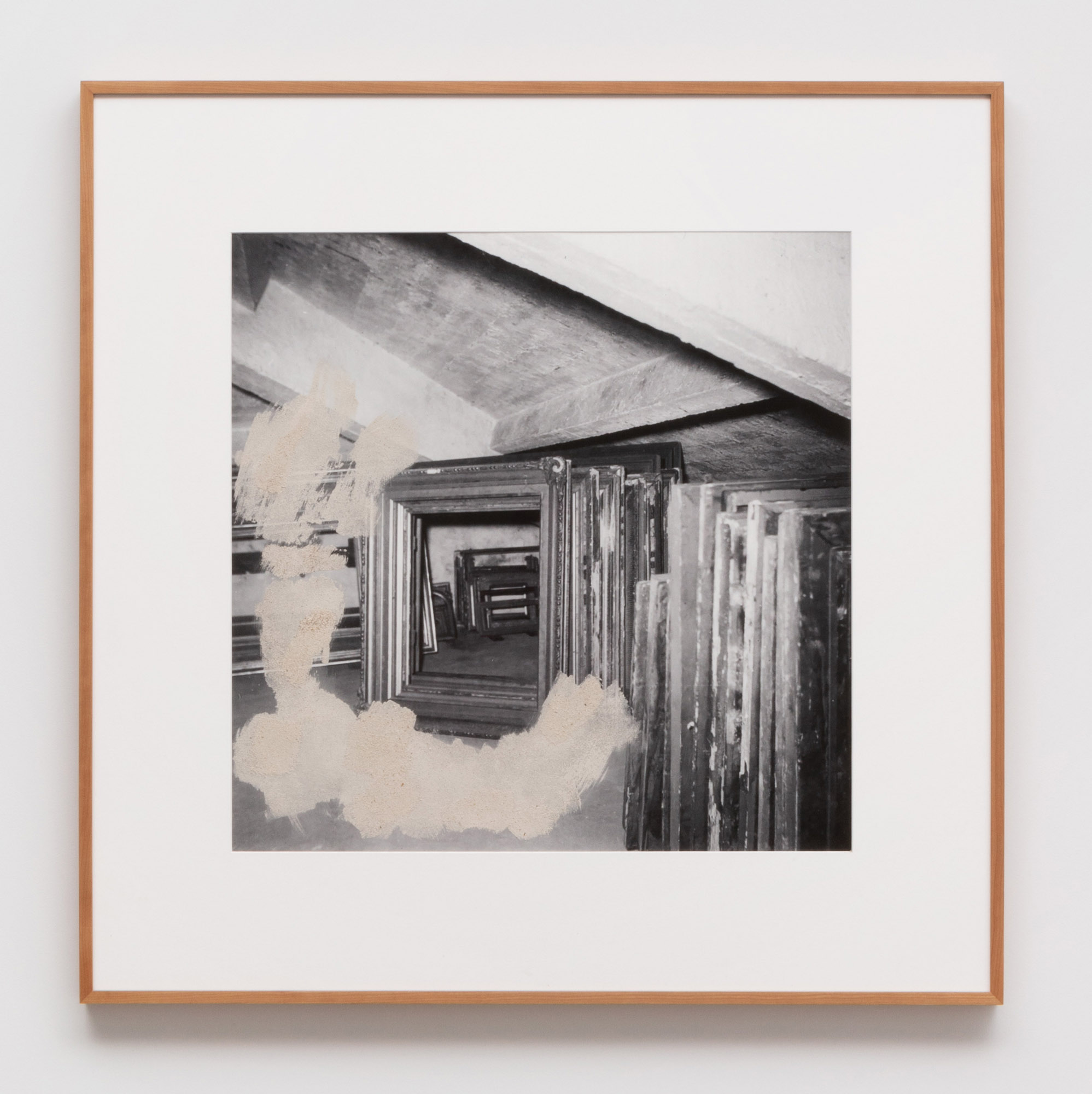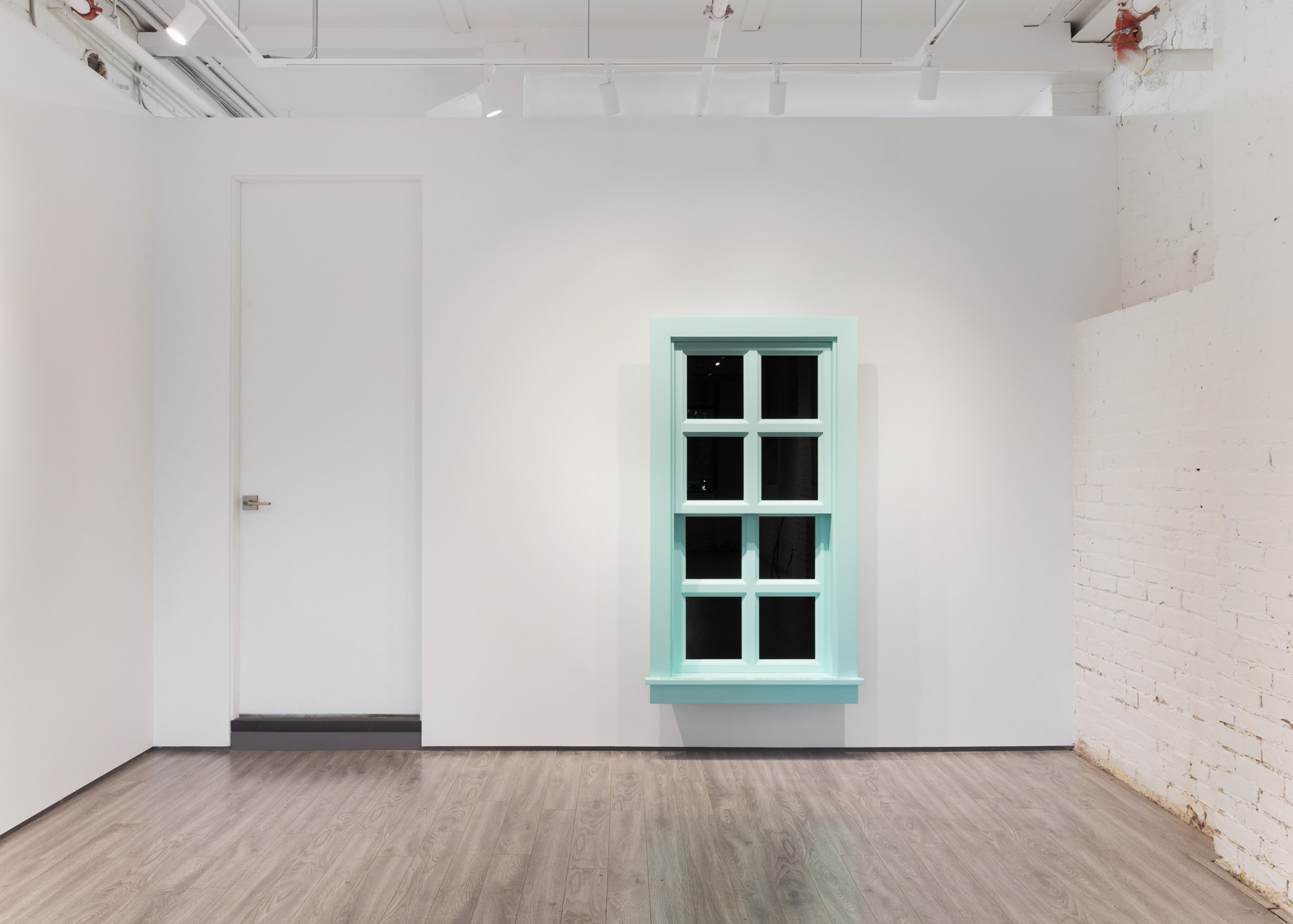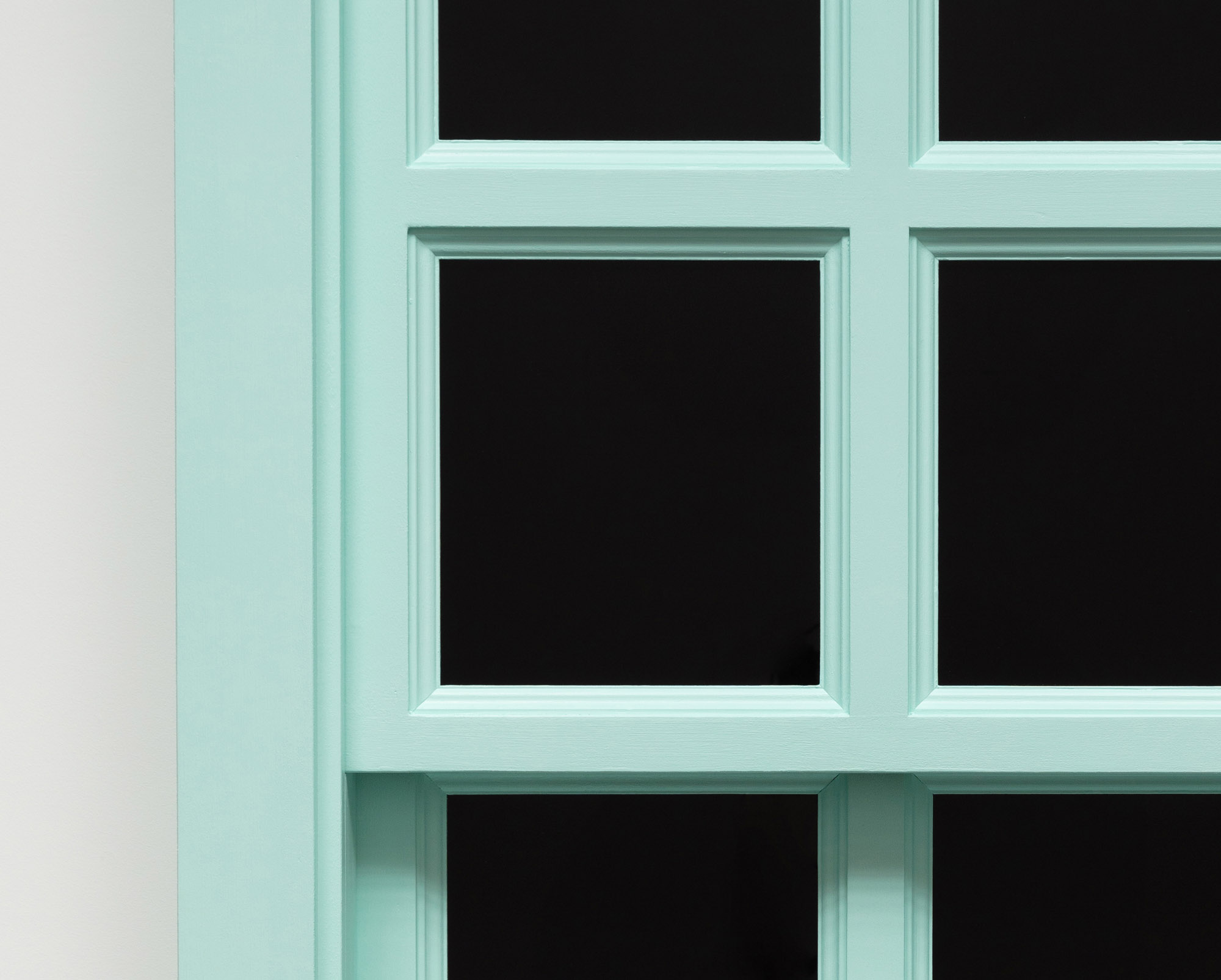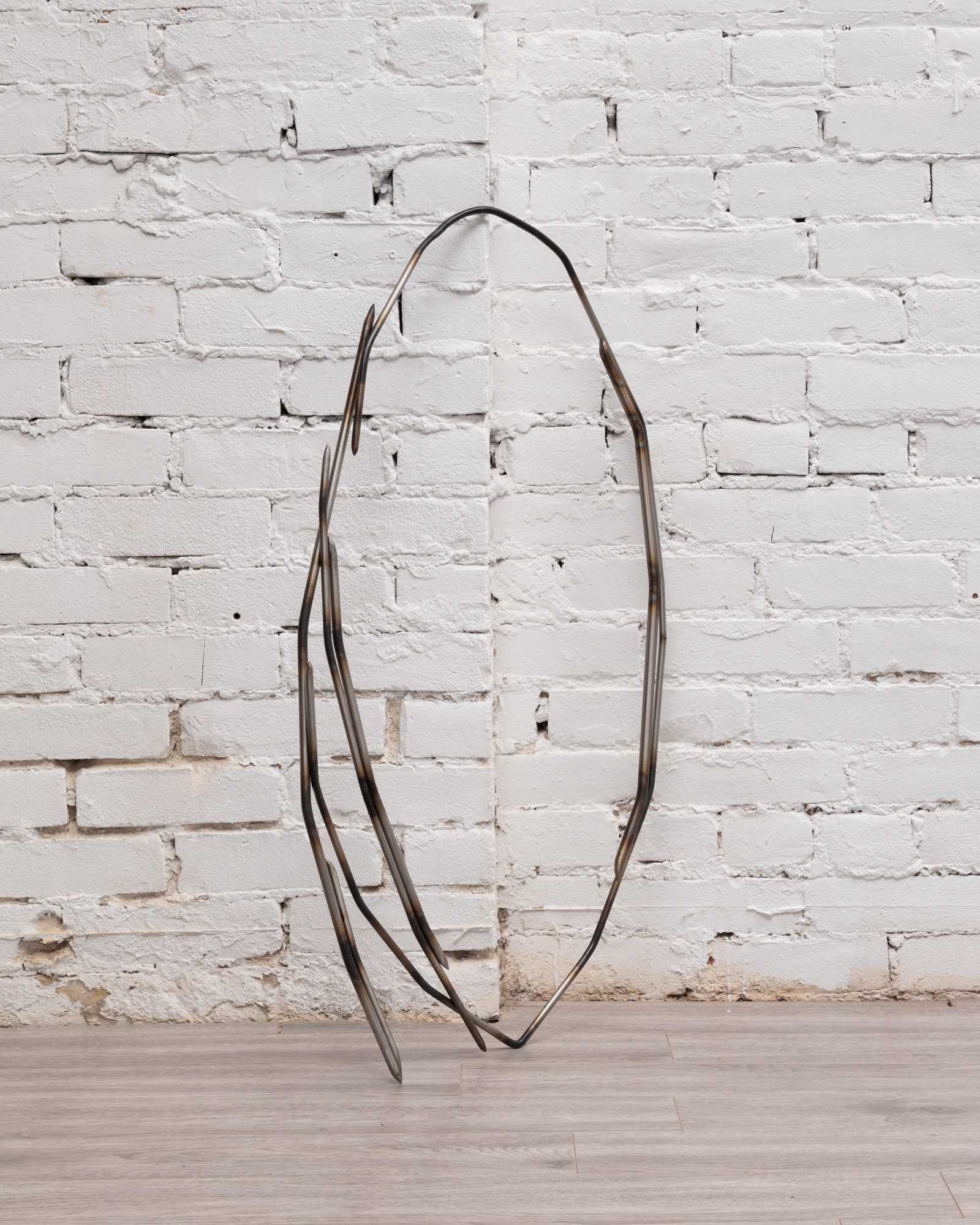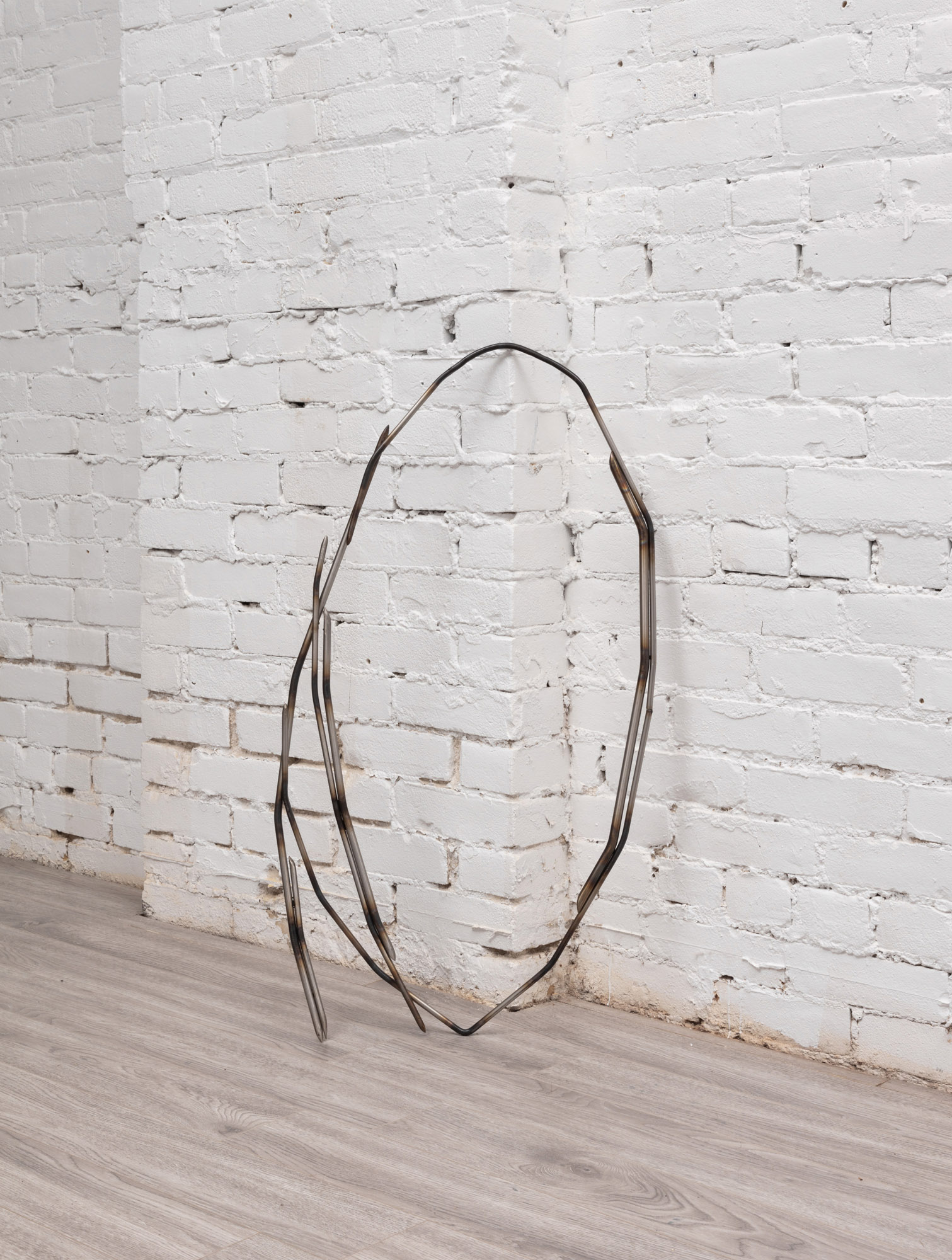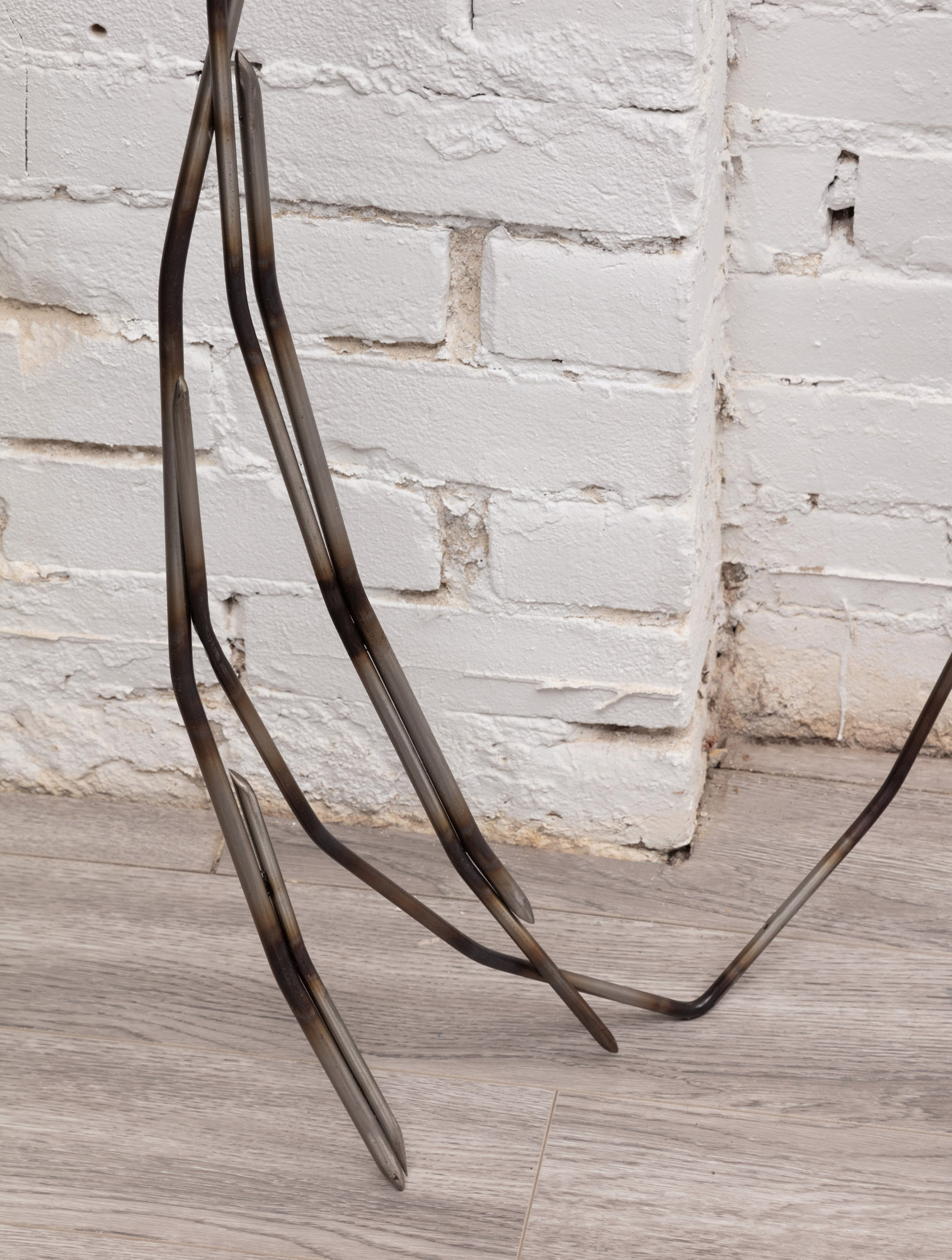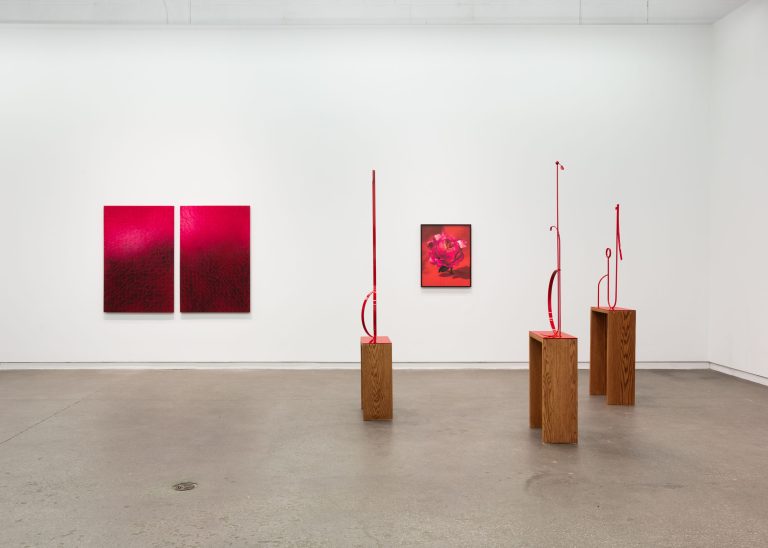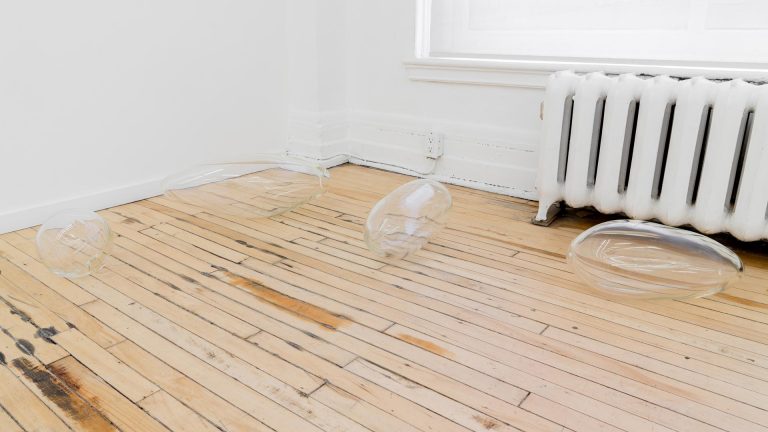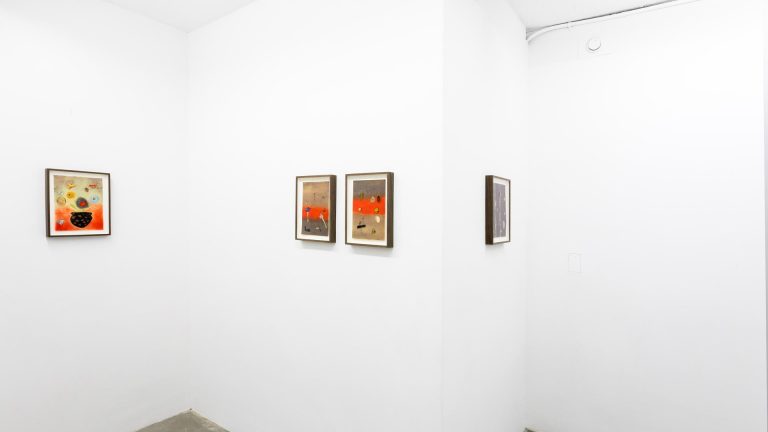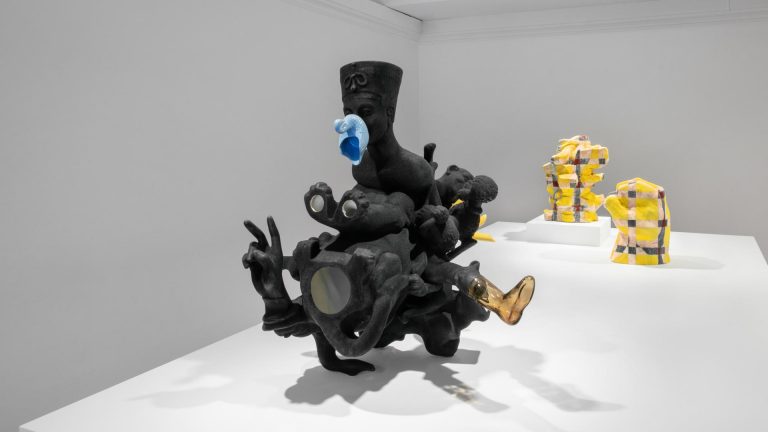Artists: Rosario Aninat, Dylan Macaulay, Simon Shim-Sutcliffe, Maria Trabulo
Exhibition title: The Window and The Frame
Venue: Towards, Toronto, Canada
Date: August 4 – September 3, 2022
Photography: all images copyright and courtesy of the artists and Towards, Toronto
Towards is pleased to present The Window and The Frame, an exhibition featuring work by Rosario Aninat, Dylan Macaulay, Simon Shim-Sutcliffe, and Maria Trabulo. The exhibition examines the construction of both images as well as physical space. Spanning photography, sculpture, and collage, the exhibition explores themes of interiority vs. exteriority, concealment vs. representation, art history, as well as the built environment.
In 1435, the Italian architect, artist, and general polymath, Leon Battista Alberti published his seminal treatsie Pictura (On Painting). In it, (amongst other things), he posited that a painting should function as an “open window onto the world…” Since then, countless artists from Vermeer and Matisse to Duchamp and Sturtevant have used the window and the frame as both a pictorial device, as well as a conceptual framework to examine the most fundamental elements in the construction of images and notions of representation.
Simon Shim-Sutcliffe’s practice explores the ways in which architecture and the built environment interface with the “natural” world. Through primarily photography and installation, he highlights the ways in which cultures and societies impose themselves onto different environments.
The four photographs included in The Window and The Frame are part of a larger series, Impressions of sites unseen. Taken during travels throughout Europe and parts of South America, the images have an isolated quality to them, spaces that feel largely devoid of any human activity while simultaneously being filled with man-made elements.
On the surface, the photographs can be read as mere documentation – capturing a specific place at a specific moment in time. Upon closer reading however, the photographs become ostensibly about the very act of constructing images. Their deliberate and meticulousness nature address the fundamental elements of image production – questions of light, form and space; of framing, cropping, and editing; and of the eternal question – of what to include and what falls outside the frame.
Maria Trabulo’s multi-disciplinary practice examines the role that images and artifacts play in shaping both personal and collective histories as well as the political implications behind the restoration and replication of cultural heritage. Working with various museums and archives, Trabulo mines their collections to develop new works, rejecting the myth of the “neutral” cultural artifact, and highlighting the ways in which these items have been, and continue to be used to frame certain political, social, and economic agendas.
In 2021 Trabulo spent time in the vaults of the Museu Nacional de Arte Antiga (National Museum of Ancient Art) located in Lisbon, PT. Founded in 1884 to exhibit the collection of the Portuguese Royal Family, the encyclopedic museum is one of the largest in the country, with a nearly 40,000 objects in its permanent collection. In the 1960’s, the museum underwent significant expansion under the dictator António de Oliveira Salazar and his “Estado Novo” regime. As part of the expansion, new vaults were constructed to house the growing collection.
At the same time, the museum became increasingly nationalistic and focused on presenting a narrative of Portugal as a colonial and imperial power that needed to be restored to its former glory.
During her time at the museum, Trabulo developed a new body of work titled Collecting Dust. Comprised of both photographic, and sculptural works, the pieces within the series combine physical debris Trabulo has collected from the archives and merges it with historical elements from the museum. The two photographic works included in The Window and the Frame, are comprised of archival images of the empty vaults, taken during construction in the mid 1960s. Trabulo combines these historical images with particles of dust, wood, and stone that she has collected from the now overflowing storage spaces.
The sculptural works were developed from graphic shapes found in the first catalogue the museum produced in 1882, two years before the building would officially open. Trabulo selected the stylized framing devices to highlight the intentional and inherently subjective act that goes into any form of selection and presentation of objects. This collapsing of time, space, and material, highlights the complex histories embedded in both these institutions and the artifacts they care for.
Dylan Macaulay’s For and After Rrose is an homage to Duchamp’s seminal work Fresh Widow. Constructed in 1920 after Duchamp returned to New York from Paris, the work was built by a local carpenter to Duchamp’s specifications. The title of the piece is a play on words – the style of window being known as “French windows” for their ubiquity in Parisian apartments, while also alluding to the abundance of recent widows following the devastation of World War 1. Fresh Widow also has the distinction of being the first work Duchamp ever signed as “Rrose Selvay”, his female alter-ego that he would return to many times over the course of his life.
In For and After Rrose, Macualay takes the long lineage of Duchamp’s readymades and extends it one more time. In his reinterpretation however, Macaulay makes a couple of important modifications. The first and most notable is scale. Duchamp’s Fresh Widow measures 30.5 in. tall, making it feel small, like a scaled replica rather than an actual window. In contrast, Macaulay’s For and After Rrose is nearly 66 inches tall, making it life size. Another key distinction is the backing materials on the windows. In Duchamp’s Fresh Widow, there is an opaque, black leather backing behind the panes of glass, of which Duchamp insisted be “be shined everyday like shoes”. In Macaulay’s reinterpretation, he has used lacquer to back paint the glass which is a commercial painting technique. This creates a reflection of the viewer, diverting attention to one’s own existence being reflected back to them. This purposeful mirroring deepens the viewers involvement in the work, allowing them to see themselves in the object and encouraging prolonged looking and contemplation.
Rosario Aninat’s practice is interested in the sculptural possibilities within mass industrial systems. Her work is characterized by both a material language and a way of directing one’s attention to the often overlooked. For her piece Moon, she zeroes in on a small detail from an important architectural site on the outskirts of Kyoto.
The Katsura Imperial Villa is a palace and set of gardens built between 1620 and 1647 for prince Toshihito. Widely regarded as prime example of traditional Japanese design, the buildings and its gardens have been an important site and inspiration for generations of both Japanese architects, as well as giants of 20th century modernism including Le Corbusier and Walter Gropius.
In Moon, Aninat has taken a small detail from the Katsura Imperial Palace and reinterpreted it. Derived from a door handle detail in the villa, the form of the sculpture is based on the Chinese ideograph for the same word (moon). Through a shift in scale and materiality, Aninat’s reinterpretation transcends its source material and evokes something wholly other. The work acts as a portal – focusing one’s attention and re-framing their experience.
–
Rosario Aninat (b. 1993, Chile) lives and works in Frankfurt am Main. She graduated from Städelschule in 2021 as part of the class of Willem de Rooij. She works combining sculpture and installation and has a separate collaborative practice with artist Simon Shim Sutcliffe. Her practice is a result of the thorough observation of the potential sculptural qualities and transformations of mass-produced materials.
Her works have been exhibited in solo and two-person exhibitions: Under it still, L187, Frankfurt (2020); And Amasia (with Simon Shim Sutcliffe), Jo-Anne, Frankfurt (2021); remains, Kastanien Projektraum, Berlin (2021); Bones (with Simon Shim Sutcliffe), fffriedrich, Frankfurt (2021).
Recent group shows include: The Whistle, Schaumankai 69, Frankfurt (2021); Digital Dadaism, Tor Art Space, Frankfurt (2021), Prism Shift, The Embassy, Brussels (2022); Of Second Glances, Magma Maria, Offenbach (2022); Sweet Machine, Spoiler, Berlin (2022); 5 More minutes, Saasfee Pavilion, Frankfurt (2022). She has been awarded DAAD Stipendium and NEUSTART KULTUR: Kickstarter-Zuschuss Stipendium in 2022.
Dylan Macaulay (b. 1990 lives and works in Toronto). He holds a BFA from the Ontario College of Art and Design. He has had solo exhibitions at Towards Gallery, Toronto in 2017. His work has been included in group exhibitions at Carl Louie, Toronto, ON (2017, 2018, 2019); Harbourfront Centre, Toronto, ON (2017); and Green River Project, Hillsdale, NY (2016).
Macaulay’s practice explores the cultural and psychological implications of exterior and interior spaces. His work examines the embodied responses that lead to expanded ideas about the objects and spaces around us; how they affect us in our day-to-day lives, the emotional responses they can elicit and the stories they can absorb and reveal. In his past works, he has directly and formally quoted objects and architectural forms from the contemporary urban environment. These works have alluded to the public park, the cafe, the restaurant, the laundromat and the convenience store as significant sites of social interaction.
Simon Shim-Sutcliffe is a Canadian artist living and working in Frankfurt, Germany. He has previously studied at the Staedelschule under Hassan Khan and Cyprien Gaillard, Sculpture at the Glasgow School of Arts, and Art History at the University of Toronto. His practice encompasses images and installations, and is concerned with the contemporary excesses of architecture and nature which form an impressionism of the tangible world.
His works have been exhibited in solo and two-person exhibitions: And Amasia (with Rosario Aninat), Jo-Anne, Frankfurt (2021); Bones (with Rosario Aninat), Fffriedrich, Frankfurt (2021), and Raum, Jo Brand, Glasgow (2019). Recent group shows include: Final Course, Fffriedrich, Frankfurt (2022); Digital Dadaism, Tor Art Space, Frankfurt (2021), 5 Gay Men and a Parking Ticket, Medium P, Frankfurt (2021), Prism Shift, The Embassy, Brussels (2022); Gross Floor Area, Frankfurt (2022).
He has been awarded the Deutschland Stipendium in 2020, an Ontario Arts Council Visual Arts Project Grant in 2021, and the Linklater LLP Rundgang Preis in 2022.
Maria Trabulo (b. Porto, 1989) is a visual artist and researcher who works between Porto (PT) and Berlin (DE). Her multi-disciplinary practice examines the role that images and artefacts play in shaping both personal and collective histories as well as the alteration and restitution of political images. Trabulo holds an MFA from the The University of Applied Arts Vienna (AUT) and is currently a Ph.D. Candidate at the School of the Arts – Universidade Católica in Porto, Portugal. Trabulo has exhibited extensively, and since 2012, has participated in artist residencies in Austria, Germany, Italy, Greece, Portugal as well as Iran.
Trabulo is one of six finalists selected for the prestigious 2022 EDP Young Artist Award. Her work will be included in an exhibition held at the Museum of Art, Architecture and Technology (MAAT) in Lisbon, in October at which time the winner will be announced. Recent solo and group exhibitions include: Towards Gallery, Toronto (2021); CAA – Águeda Cultural Centre, (2021): Porto Municipal Gallery, Porto (2019); Deegar Platform, Tehran (2019); Serralves Museum of Contemporary Art (2018); Museum of Art, Architecture, and Technology, (MAAT) Lisbon, (2017); Neue Gallery – TirolerKunstlerschaft, Innsbruck (2017); Galerie UngArt, Vienna (2015); Nuno Centeno Gallery, Porto (2015); KARAT, Cologne (2013); and Super Tokonoma, Kassel (2012).
The Window and The Frame, 2022, exhibition view, Towards, Toronto
The Window and The Frame, 2022, exhibition view, Towards, Toronto
The Window and The Frame, 2022, exhibition view, Towards, Toronto
The Window and The Frame, 2022, exhibition view, Towards, Toronto
Simon Shim–Sutcliffe, Impression of sites unseen 1. (Library of Glasgow Caledonian University), 2022, Photograph printed on Canson Infinity Platine fibre rag paper, mounted to white rag board Print: 8 x 12 in. ( 20 x 30 cm.) Frame: 12 x 15.75 in. (30 x 40 cm.)
Simon Shim–Sutcliffe, Impression of sites unseen 2. (Structure on Calle Bustamante in Valparaíso), 2021, Photograph printed on Canson Infinity Platine fibre rag paper, mounted to white rag board Print: 8 x 12 in. ( 20 x 30 cm.) Frame: 12 x 15.75 in. (30 x 40 cm.)
Simon Shim–Sutcliffe, Impression of sites unseen 3. (Lobby of Vienna postal savings bank), 2022, Photograph printed on Canson Infinity Platine fibre rag paper, mounted to white rag board Print: 8 x 12 in. ( 20 x 30 cm.) Frame: 12 x 15.75 in. ( 30 x 40 cm.)
Simon Shim–Sutcliffe, Impression of sites unseen 4. (Rooftop of Museum für Moderne Kunst Frankfurt), 2020, Photograph printed on Canson Infinity Platine fibre rag paper, mounted to white rag board, Print: 8 x 12 in. ( 20 x 30 cm.) Frame: 12 x 15.75 in. (30 x 40 cm.)
The Window and The Frame, 2022, exhibition view, Towards, Toronto
The Window and The Frame, 2022, exhibition view, Towards, Toronto
The Window and The Frame, 2022, exhibition view, Towards, Toronto
Maria Trabulo, Collecting Dust (Improvement of the deposit area for the sculpture collection (Ground Floor) – National Museum of Ancient Art Lisbon © Mário Novaes 1972), 2021, Inkjet print on Museum Natural Smooth 310g/m2 paper, Dust and sediments of tempera, paint, wood, stone, and clay, Work: 17.75 x 23.75 in. (60 x 45 cm.) Frame: 28 x 34 in. (71 x 86 cm.)
The Window and The Frame, 2022, exhibition view, Towards, Toronto
Maria Trabulo, Collecting Dust (Fig. 3 – Album de Phototypias – National Museum of Ancient Art Lisbon, 1882), 2022 Dust and sediments of tempera, paint, wood, stone, and clay on plexiglass 20.5 x 12.5 x 0.5 in. (52.5 x 31.5 x 1 cm.)
Maria Trabulo, Collecting Dust (Fig. 3 – Album de Phototypias – National Museum of Ancient Art Lisbon, 1882), 2022 Dust and sediments of tempera, paint, wood, stone, and clay on plexiglass 20.5 x 12.5 x 0.5 in. (52.5 x 31.5 x 1 cm.)
The Window and The Frame, 2022, exhibition view, Towards, Toronto
Maria Trabulo, Collecting Dust (Collection of Frames – National Museum of Ancient Art Lisbon © Abreu Nunes 1956), 2021, Inkjet print on Museum Natural Smooth 310g/m2 paper, Dust and sediments of tempera, paint, wood, stone, and clay, Work: 23.75 x 23.75 in. (60 x 60 cm.) Frame: 33 x 34 in. (84 x 84 cm.)
The Window and The Frame, 2022, exhibition view, Towards, Toronto
The Window and The Frame, 2022, exhibition view, Towards, Toronto
Dylan Macaulay, For and After Rrose, 2021, Wood, glass, lacquer, exterior acrylic paint and hardware 65.5 x 30 x 9.75 in. (165 x 76 x 25cm)
Dylan Macaulay, For and After Rrose, 2021, Wood, glass, lacquer, exterior acrylic paint and hardware 65.5 x 30 x 9.75 in. (165 x 76 x 25cm)
Dylan Macaulay, For and After Rrose, 2021, Wood, glass, lacquer, exterior acrylic paint and hardware 65.5 x 30 x 9.75 in. (165 x 76 x 25cm)
Dylan Macaulay, For and After Rrose, 2021, Wood, glass, lacquer, exterior acrylic paint and hardware 65.5 x 30 x 9.75 in. (165 x 76 x 25cm)
The Window and The Frame, 2022, exhibition view, Towards, Toronto
The Window and The Frame, 2022, exhibition view, Towards, Toronto
Rosario Aninat, Moon, 2022, Forged stainless steel, 35 x 19.5 in. (90 x 50 cm.)
Rosario Aninat, Moon, 2022, Forged stainless steel, 35 x 19.5 in. (90 x 50 cm.)
Rosario Aninat, Moon, 2022, Forged stainless steel, 35 x 19.5 in. (90 x 50 cm.)
Rosario Aninat, Moon, 2022, Forged stainless steel, 35 x 19.5 in. (90 x 50 cm.)
Simon Shim–Sutcliffe, Impression of sites unseen 5. (Vitrine in Frankfurt Zoo), 2022, Photograph printed on Canson Infinity Platine fibre rag paper, mounted to white rag board, Print: 8 x 12 in. ( 20 x 30 cm.) Frame: 12 x 15.75 in. (30 x 40 cm.)


